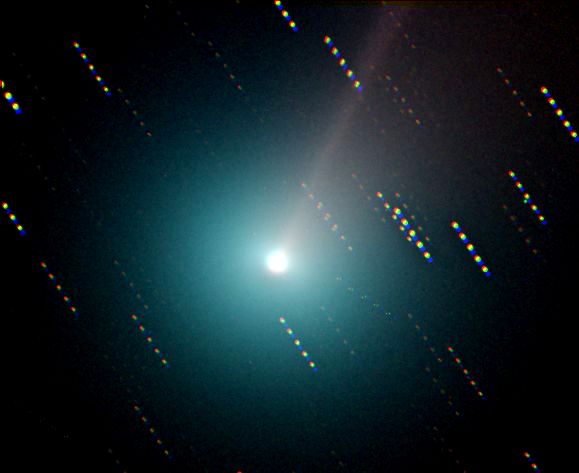
This comet was discovered by the Lincoln Laboratory Near Earth Asteroid Research project. This image was taken on June 30, 2001, after the comet had passed perihelion and was moving away from us and the sun. The comet had just became visible from the northernm hemisphere as a morning object, after a period when it was only visible from the southern hemisphere while at its brightest. I had no difficulty locating the comet with binoculars.
Comets are essentially dirty snow-balls, and are believed to contain material left over from the formation of the solar system. Comets spend most of their time far from the inner solar system in a region beyond the plant Pluto known as the Oort Cloud, orbiting at a distance of about half a light year from the Sun. When a comet is out in the Oort Cloud, it is much too far away to be seen from Earth. Comets are only discovered when the comet's orbit brings it into the inner solar system. When that happens, the heat from the Sun causes outer frozen layers of the comet to "melt" or sublimate, and the comet grows a tail. In this image, you can see the comet's tail exrtending away from the sun.
This is an unguided composite CCD image consisting of five exposures each taken through red, green and blue filters with an ST-8E and CFW-8 color filter wheel using a Takahashi FCT-150 refractor telescope at prime focus operating at f7. The image was taken from a dark sky location North of Phoenix, Arizona.
Constellation: Cetus
RA:00h 47m Dec:-06d 00'.
June 30, 2001 at 0945 U.T.
Image by Sid Leach
Phoenix, Arizona.
Recent Images.
Complete list of images.
Description of equipment used to acquire images.
Home
Feedback and comments should go to Sid